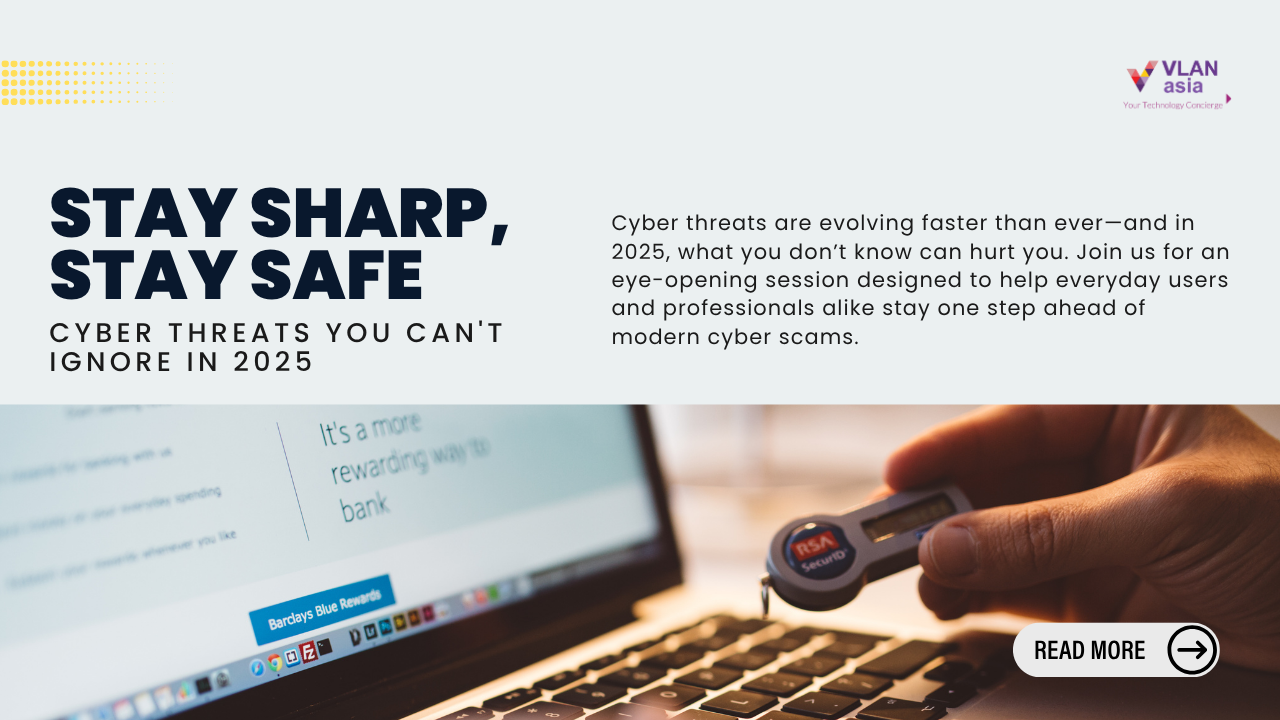Stay Sharp, Stay Safe: Cyber Threats You Can’t Ignore in 2025

We live in a world where almost everything is connected. That connection brings a lot of convenience—but it also creates new risks. Cyber threats have become smarter, faster, and more personal, and for many businesses, the question isn’t if they’ll be targeted—it’s when.
That’s the reality we explored in our recent webinar, Stay Sharp, Stay Safe: Cyber Threats You Can’t Ignore in 2025. The session broke down what’s really happening in the cybersecurity space right now, what’s changed in the last year, and what businesses need to start doing today to stay protected.
It’s Not Just About IT Anymore
One thing was clear right from the start: cybersecurity isn’t just an IT issue. It affects operations, finances, your team’s productivity—even your reputation. And in today’s world, even the smallest oversight can open the door to big problems.
Simple things—like clicking on a suspicious link, ignoring a system update, or using the same password across multiple accounts—are still among the most common causes of breaches. And with more teams working remotely and using cloud-based tools, the “attack surface” has grown significantly.
The Rise of AI—On Both Sides
One of the most talked-about shifts this year is the role of AI in cybersecurity. It’s helping security teams monitor systems, detect anomalies, and respond faster. That’s the good news.
The not-so-good news? Cybercriminals are using it too.
AI-generated phishing emails, voice clones, deepfake videos—these aren’t future problems. They’re happening right now. And they’re getting harder to detect. That fake voicemail from your CEO asking for an urgent transfer? It might not be real, but it can still do real damage.
Real Stories, Real Lessons
During the session, we looked at real-world examples of how breaches typically start. And surprisingly, it’s rarely some high-level, ultra-technical hack. More often, it’s someone forgetting to update their software, or clicking on a link that looked just a little too legit.
In one example, an unpatched system was left exposed for weeks, which gave attackers just enough time to get in. In another, a convincing phishing email led to a data breach that spread across multiple departments before anyone realised what had happened.
What made the difference wasn’t luck—it was preparation. Teams that had the right basics in place (like backups, MFA, and incident plans) were able to bounce back. Others weren’t so fortunate.
Five Things You Can Do Right Now
The good news? Protecting your business doesn’t have to be expensive or complicated. Here are five simple, effective actions you can take today:
-
Use Multi-Factor Authentication (MFA)
It’s one of the easiest ways to block unauthorised access—and it really works. -
Train your team
People are often the first target. Regular awareness training helps everyone spot red flags before it’s too late. -
Stay updated
Set up a routine for patching and updating your systems. Outdated software is a known weakness. -
Back up your data—and test it
Make sure you’re not just backing things up, but that your recovery process actually works. -
Have a clear incident response plan
Know who does what, who gets informed, and how things will be communicated when something goes wrong.
Moving Forward: A Shared Responsibility
The main message? You don’t need to become a cybersecurity expert overnight. But staying passive isn’t an option either. It’s about building a culture where everyone—from leadership to interns—understands their role in keeping the business secure. The risks may be evolving, but so are the tools and tactics available to defend against them.
As we were reminded during the webinar, “You don’t need to be perfect—you just need to be prepared.”
You can catch the full webinar replay on YouTube here:
🎥 Watch the full webinar
And if you’d like to dive deeper, we’ve also prepared the presentation slides to help you strengthen your security posture starting today:
📄 Download the slides
Whether you're reviewing your current defences or building from scratch, these tools will help you make smarter, safer decisions moving forward.
